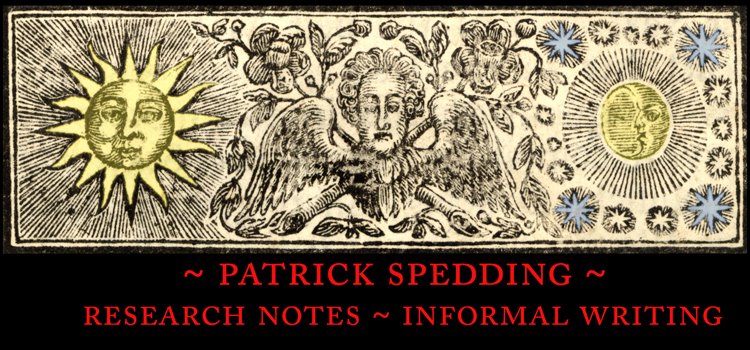Recently, my scholar-cousin found a roll of film in a canister marked: "Spedding. Berlin." Since he and I thought this might be 24 long-lost happy-snaps from a trip to Berlin, I asked him to send the film to me unopened, and asap.
As it happens, I should have asked him to look at it more closely first because, not only was it not a long-lost film of happy-snaps, the film was not from Berlin. Instead, it was a microfilm I had ordered for him from the British Library back in 1995, when I was in London.
It seems that, at that time, he needed to chase up a reference to an obscure Latin work, which contained a list of
-mancy words. Johann Albert Fabricius,
Bibliographia antiqvaria, sive introdvctio in notitiam scriptorvm qvi antiqvitates hebraicas, graecas, romanas et christianas scriptis illvstrarvnt (1713), CAPUT XII, §2. "De divinationibus, Vatibus, miraculis, Magia, juramentis et votis, scriptores." [
oracles, soothsayers, magic, oaths and vows, writing].
Although there was a copy of this book in Australia, that copy was at the University of Melbourne, one thousand kilometers away from Sydney (where he lived at the time). Also, the University of Melbourne was not set up for copying as easily or cheaply as the British Library—where I was busy at work on my Haywood bibliography.
So, rather than him taking a long road-trip to check the reference, or pay a small fortune for photographs to be taken of each page, I paid £3.53 for a duplicate microfilm at the British Library. When the microfilm arrived, I obviously rationalised the
many microfilms I had accumulated for my research, and sent him his film in a spare canister.
So, mystery solved. But it struck me that this vignette of antipodean scholarly industry was worth relating, if only to compare it to the ease with which we can chase up a reference to an obscure** Latin work today. Totally unsurprisingly, this obscure Latin work has been freely available online since 2017 via
Google Books.
And,
because [1] it is freely available online, and [2] there is little demand for obscure Latin scholarship, you can buy an even earlier edition than held anywhere in Australia for USD75.00. I am not sure what
this 1708 edition (below) might have been priced at in 1995, but my guess is between five and ten times as much as it is now.
Of course, [1] is directly related to [2]: there are now almost no libraries seeking to establish a collection of such scholarly depth that they are filling Rare Books collections with obscure Latin scholarship, in the way that the University of Melbourne once did.
When the classical heritage of the West was returned to us via the East, it prompted a renaissance—two of them actually: one in the
Twelfth century and one two or three centuries later, which we call either
the Renaissance or the Italian Renaissance.
It seems to me that the boggling scholarly riches readily available to us in the twenty-first century should be prompting a third renaissance in the Humanities. The time that scholars previously wasted in overcoming the tyranny of distance (via travel and cumbersome copying) can now be spent in pushing forward research: much further and faster than was possible in the twentieth century.
Perhaps this third renaissance is underway. If so, evidence for a twenty-first century renaissance is no easier to find than Fabricius's
Bibliographia antiqvaria was in 1995.
**Although
Wikipedia tells us that Fabricius was a celebrated bibliographer and collector of manuscripts, who is credited with compiling 128 books, there are
very few references to Fabricius' "De divinationibus" online, before or after 1995.



















